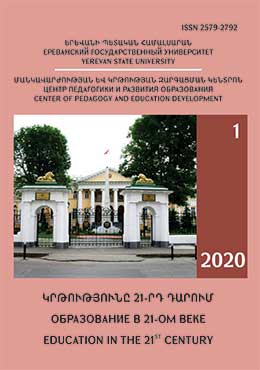IMPROVING EDUCATION AND TRAINING IN BASIC CARDIOPULMONARY RESUSCITATION: NEW RESEARCH AND PERSPECTIVES
DOI:
https://doi.org/10.46991/educ-21st-century.v1i3.10991Keywords:
Keywords: basic cardiopulmonary resuscitation (CPR), effective CPR education and training.Abstract
It is widely admitted that education and training are the effective modalities that substantially improve resuscitation care for cardiac arrest. The high quality cardiopulmonary resuscitation (CPR), including early recognition of cardiac arrest, adequate chest compressions, opening of the airway and rescue breathing, are important determinants of successful outcome in cardiac arrest patients.
The aim should be to develop teaching strategies for general public and healthcare professionals to deliver effective CPR and defibrillation to save more lives.
Education in resuscitation is still a relatively new field lacking high quality research. Studies are heterogeneous in design and difficult to compare.
Our approach to education is constantly changing. Methods for teaching have changed substantially over the years and continue to evolve.
This paper provides review of available literature regarding education in resuscitation. It also reviews the new Guidelines for Resuscitation of the European Resuscitation Council (ERC), American Heart Association (AHA) and International Liaison Committee on Resuscitation (ILCOR), focusing on the most important changes in recommendations for education and training. It also summarises the ERC basic principles of education and implementation of resuscitation, providing the basis for improving CPR education.
The review of the above available sources nonetheless confirms there is still a shortage of evidence about the best methods of teaching. Until the time that statistical significance is achieved, it is essential that we continue to evaluate our educational methods and assess the educational importance or relevance of the findings.
References
К. Манасян. Новая стратегия базовой сердечнолегочной реанимации при внегоспи-тальной остановке сердца. “Образование в XXI веке”, номер 2(2), с. 186-194, 2019. Издательство ЕГУ, Ереван.
Andresen D, Arntz HR, Grafling W, et al. Public access resuscitation program including defibrillator training for laypersons: a randomized trial to evaluate the impact of training course duration. Resuscitation 2008; 76:419-24.
American Heart Association Guidelines for Cardiopulmonary Resuscitation and Emergency Cardiovascular Care. Updated Jan 2020. https://www.cprcertificationonlinehq.com/-aha-cpr-guidelines-latest-jan-2014
Brannon TS, White LA, Kilcrease JN, Richard LD, Spillers JG, Phelps CL. Use of instructional video to prepare parents for learning infant cardiopulmonary resuscitation. Proc (Bayl Univ Med Cent) 2009; 22:133–7.
Chamberlain DA, Hazinski MF. Education in resuscitation. Resuscitation 2003; 59:11-43 8.
Cave DM, Aufderheide TP, Beeson J, et al. Importance and implementation of training in cardiopulmonary resuscitation and automated external defibrillation in schools: a science advisory from the American Heart Association. Circulation 2011;123:691-706.
(Guideline) Greif R, Lockey AS, Conaghan P, Lippert A, De Vries W, Monsieurs KG, et al. European Resuscitation Council Guidelines for Resuscitation 2015: Section 10. Education and implementation of resuscitation. Resuscitation. 2015 Oct. 95:288-301.
Einspruch EL, Lynch B, Aufderheide TP, Nichol G, Becker L. Retention of CPR skills learned in a traditional AHA Heartsaver course versus 30-min video self-training: a controlled randomized study. Resuscitation 2007;74: 476-86.
Harrison-Paul R, Timmons S, van Schalkwyk WD. Training lay-people to use automatic external defibrillators: are all of their needs being met? Resuscitation 2006;71:80–8.
Iwami T, Kitamura T, Kawamura T, et al. Chest compression-only cardiopulmonary resuscitation for out-of-hospital cardiac arrest with public-access defibrillation: a nationwide cohort study. Circulation 2012;126:2844-51.
Isbye DL, Rasmussen LS, Lippert FK, Rudolph SF, Ringsted CV. Laypersons may learn basic life support in 24 min using a personal resuscitation manikin. Resuscitation 2006;69: 435–42.
Jacob Hollenberg. Survival in Out-of-Hospital Cardiac Arrest After Standard Cardiopulmonary Resuscitation or Chest Compressions Only Before Arrival of Emergency Medical Services. Nationwide Study During Three Guideline Periods. Circulation. 2019; Vol. 139, No 23, 2600–2609 https://doi.org/10.1161/CIRCULATIONAHA.118.038179
Lynch B, Einspruch EL, Nichol G, Becker LB, Aufderheide TP, Idris A. Effectiveness of a 30-min CPR self-instruction program for lay responders: a controlled randomized study. Resuscitation 2005; 67:31–43.
Plant N, Taylor K. How best to teach CPR to schoolchildren: a systematic review. Resuscitation 2013; 84:415–21.
Roppolo LP, Pepe PE, Campbell L, et al. Prospective, randomized trial of the effectiveness and retention of 30-min layperson training for cardiopulmonary resuscitation and automated external defibrillators: the American Airlines Study. Resuscitation 2007;74:276–285.
Reder S, Cummings P, Quan L. Comparison of three instructional methods for teaching cardiopulmonary resuscitation and use of an automatic external defibrillator to high school students. Resuscitation 2006; 69:443–53.
Nichol G, Huszti E, Birnbaum A, et al. Cost effectiveness of lay responder defibrillation for out of hospital cardiac arrest. Annals of emergency medicine 2009; 54: 226-35 e1-2.
Folke F, Lippert FK, Nielsen SL, et al. Location of cardiac arrest in a city center: strategic placement of automated external defibrillators in public locations. Circulation 2009; 120: 510–7.
Downloads
Published
How to Cite
Issue
Section
License

This work is licensed under a Creative Commons Attribution-NonCommercial 4.0 International License.

